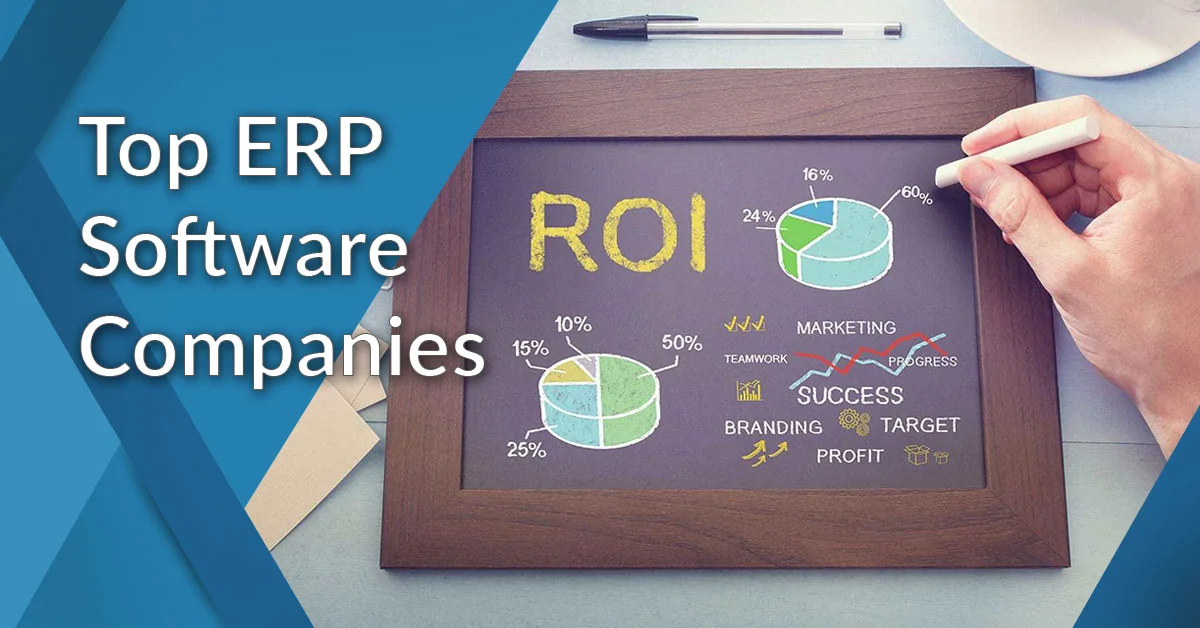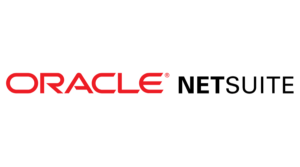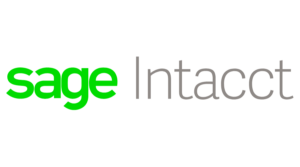ERP systems have become an essential tool for businesses looking to streamline their operations and boost efficiency. These powerful systems integrate various business functions into a single, cohesive platform, providing organizations with automation and optimization capabilities. By adopting an ERP system, companies can achieve better workflow management and improve collaboration, making them more agile and competitive in today’s dynamic market.
With ERP systems, processes such as finance, inventory management, manufacturing, and customer relationship management are seamlessly connected, ensuring accurate and real-time data flow across different departments. This integration eliminates the need for manual data entry and reduces human error, allowing employees to focus on more strategic tasks that drive growth and innovation.
Moreover, ERP systems offer advanced features like analytics and reporting, empowering businesses with valuable insights for decision-making. Real-time data allows managers to monitor performance, identify bottlenecks, and make data-driven decisions promptly. This enables organizations to identify opportunities for cost savings, improve operational efficiency, and enhance customer satisfaction.
Selecting the right ERP platform plays a crucial role in maximizing the benefits. Organizations need to carefully evaluate their business requirements, scalability, integration capabilities, and vendor support before making a decision. Furthermore, successful implementation strategies, such as project planning, data migration, and employee training, are vital to ensure a smooth transition and successful adoption of the ERP system.
By leveraging ERP systems, businesses can streamline their processes, improve efficiency, and gain a competitive edge in the market. Whether it’s a small startup or a large enterprise, ERP systems provide the foundation for growth, enabling organizations to adapt to changing customer demands, make informed decisions, and drive sustainable success.
Understanding the Basics of ERP Systems
ERP systems play a crucial role in modern businesses, enabling them to streamline their operations and achieve greater efficiency. But what exactly are ERP systems and how do they work? In this section, we will delve into the basics of ERP systems, covering their fundamental concepts, their role in centralizing data, and their integrated modules for different business functions.
At its core, an ERP system is a software solution that integrates and manages various business functions, processes, and data within a single system. It serves as a centralized database, allowing different departments and stakeholders to access and share information seamlessly. This centralization of data eliminates data silos and enables real-time collaboration and decision-making.
ERP systems consist of different modules or applications that handle specific business functions such as finance, human resources, sales, inventory management, and supply chain management. These modules are interconnected, allowing data to flow seamlessly between them. For example, when a sales order is processed, it automatically updates the inventory level and triggers the production process, ensuring efficient and accurate operations.
In addition to centralizing data and streamlining business processes, ERP systems also play a vital role in digital transformation. As businesses embrace digital technologies, ERP systems provide a framework for integrating new technologies such as cloud computing, artificial intelligence, and Internet of Things (IoT) into their operations. This integration enables businesses to leverage advanced analytics, automate manual tasks, and gain valuable insights for better decision-making.
The benefits of implementing ERP systems are numerous. Increased visibility is one of the key advantages, as ERP systems provide real-time information about various aspects of the business, enabling stakeholders to monitor performance, identify bottlenecks, and make data-driven decisions. Enhanced collaboration is another significant benefit, as ERP systems facilitate cross-departmental collaboration and improve communication among team members. This leads to increased efficiency and productivity.
Furthermore, ERP systems help businesses optimize their processes and reduce operational costs. By eliminating manual and redundant tasks, automating workflows, and providing insights into resource allocation, businesses can achieve higher efficiency and cost savings. ERP systems also enable better customer relationship management, by ensuring accurate and up-to-date customer data is readily available, which enhances customer satisfaction and loyalty.
In summary, ERP systems are essential tools for modern businesses. By centralizing data, integrating modules for different business functions, and driving digital transformation, they streamline operations, improve efficiency, and provide valuable insights for proactive decision-making. Next, we will explore the key features and capabilities of ERP systems in more detail.
10 Best ERP Systems for Small Businesses in 2024
In this article, you can know about Best ERP for small manufacturing business here are the details below;
1. Microsoft Dynamics 365
This is one of the more trusted ERP alternatives selected by business. Microsoft is known for providing ERP solutions and a number of CRM options. These features are included into the system that helps businesses support their enterprise and develop lasting relationships with their customers. In addition, since it is entirely cloud-based, it will not put any pressure on the server and has specific affordability contributed to it. So, selecting the incorporated versions of Microsoft Dynamics 365 Business Central will be an excellent idea. Also check Storyline software
2. Oracle Netsuite
When it comes to the schedule of Oracle, different activities can be performed using this tool. Hence, the brand is understood for establishing some of the most-reliable ERP choices. Numerous cloud-based apps can quickly be constructed with making use of Oracle. The applications are incorporated into different specific niches such as HR, Finance, ERP, etc. About 200 nations worldwide are utilizing this tool due to the remarkable advantages.
3. SAP Business One
This tool has actually been designed specifically for SMBs that want to have some growth in their business. With the benefit of this medium, you can envision some incredible insights suitable for your company. For this reason, making decisions using SAP Business One ends up being simple. Not to mention that you will have the ability to manage the business quickly. With this tool on your side, you can dominate the world of getting, sales, customer care, and much more. Choose from the fantastic control panel patterns to have more control over your business.
4. Acumatica
For the companies that want complete digital integration with their services, Acumatica is the right choice. When it comes to mobile and network integration, Acumatica has no other rival for sure. You will quickly be able to include various applications and tools utilizing this program. Some of the other functions that tend to make Acumatica the fantastic tool that it is our versatility and total performance. With the assistance of this tool, your business will considerably benefit for sure. You can focus on smoother operations and produce the very best results for the business. Also check Free unlimited data recovery software
5. Tally
Businesses nowadays have actually differed purposes and interests, thus developing various chances for ERP solutions. Not all software programs can adjust to business firms’ increasing needs and requirements. Nevertheless, there is no grievance from the users concerning Tally. Tally can guarantee correct efficiency and better results no matter what type of business you handle. The software has been created specifically to match the desires of modern-day organizations, and hence one can entirely rely on this software application to offer them fantastic outcomes.
6. Brightpearl
The style of Brightpearl is particularly done to assist the companies that routinely handle retail-related activities. Therefore, fascinating functions are added to the design, such as stock management, sales company, satisfaction, warehouse management, preparing alternatives, etc. In addition, other benefits are included in the software application choice, such as automation, omnichannel, and insights that can help you handle different operations in real-time. So, all of these incredible functions make Brightpearl an incredible ERP service to invest your cash in.
7. Sage Intact
With the help of Sage Intact in your business, you can increase its financial presence tremendously. Not to mention that everything occurs in real-time to supply the best possible results for the company. So, you can guarantee that the company’s financial security is enhanced through the charts. With automated functions, you can save a lot of money on manual labor. With different sections provided in the software application, such as vendor management, acquiring, accounting, financial consolidation, inventory management, cash flow management, and lots of others, you can guarantee that your company remains at the top with the best services. Interested clients can also examine the complimentary trial before picking the software application. Selecting Sage Intact will undoubtedly be a great investment for your business.
8. Odoo ERP
While Odoo ERP categorizes itself as an open-source platform, the number of personalizations you can do with the software will benefit your business. This platform is created to assist different business and small organizations with accounting processes, sales management, manufacturing, CRM, etc. You get the entire bundle of features and trials with this tool. One of the amazing things about Odoo ERP is that it can be used by an organization with a limited budget and a smaller size. The platform is completely automated and supplies different combination alternatives for the customers. The primary goal of Odoo ERP is to ensure that all procedures, operations, and alternatives are used to the companies at a particular destination. This tool is handy for your business with its easy to use design and innovative approach.
9. SAP Business By Design
If you are trying to find a new tool aside from Microsoft Dynamics 365, then SAP Business by Design is the alternative. This platform is cloud-based and particularly produced for SMBs all over the world. Not just that, however it is likewise amazing for the subsidiary business firms. There are different sectors where one might use the platform, such as financial resources and human resources. Some of the remarkable benefits of SAP Business by Design consist of insights, support, and movement. There are 12 various languages integrated into the software for lasting support. About 144 countries around the world are using this software, so there must be something great with it, right? Check out the fantastic package that consists of a wide range of remarkable applications and storage advantages. It will definitely be money well-spent. Also check What is a trademark
10. SAP S/4HANA
Are you on the lookout for something smart adequate to look for business opportunities for you? Then look at SAP S/4HANA, and the results will surely ignite your interest. The platform provides much better decision-making capabilities to your business by providing business analytics and insights in real-time. Additionally, with computer system memory built into the system, the tool provides supreme convenience and efficiency. There are 3 alternatives offered in the software application for hybrid, cloud, and on-premise services since it is the smart tool it is. Not to mention that a free trial is readily available for your business so that you can take a look at the functions that the software application has to offer.
Key Features and Capabilities of ERP Systems
ERP systems provide businesses with a wealth of key features and capabilities that are designed to streamline operations and enhance overall efficiency. These features enable organizations to optimize their workflows and make data-driven decisions that drive growth and success. Let’s explore some of the key features and capabilities of ERP systems:
Integrated Business Operations
One of the main benefits of ERP systems is their ability to integrate various departments and functions within an organization. This integration allows for seamless collaboration and information sharing across different teams, leading to improved communication and decision-making. With ERP systems, departments like finance, human resources, inventory management, and sales can access and share data in real-time, enabling a holistic view of business operations.
Real-Time Data and Analytics
ERP systems offer real-time data and analytics capabilities, allowing businesses to access up-to-date information and gain valuable insights into their operations. With real-time data, organizations can quickly identify trends, monitor performance indicators, and make data-driven decisions. This enables businesses to respond promptly to market changes, optimize their processes, and stay competitive in dynamic environments.
Customization and Scalability
ERP systems can be customized to meet the specific needs and requirements of different organizations. This flexibility allows businesses to tailor the system to their unique workflows, processes, and industry-specific demands. Additionally, ERP systems offer scalability, meaning they can grow and adapt as the business expands. This ensures that the system can accommodate increasing data volumes, additional users, and evolving business needs.
These are just a few of the key features and capabilities that ERP systems offer businesses. By leveraging these functionalities, organizations can streamline their operations, enhance collaboration, and gain a competitive edge in their industry.
The Evolution and History of ERP Systems
The evolution of ERP systems has led to significant advancements in streamlining business processes and improving operational efficiency. These systems have come a long way from their predecessors, such as Material Requirements Planning (MRP), to become powerful tools that integrate various business functions and workflows into a single, cohesive system.
ERP systems have evolved alongside technological advancements, paving the way for their development and widespread adoption. The integration of advanced technologies like cloud computing and artificial intelligence (AI) has revolutionized the capabilities and accessibility of ERP systems.
Historically, ERP systems emerged in the 1960s with the introduction of MRP systems, which focused primarily on production planning and inventory management. As technology advanced, ERP systems expanded to encompass a broader range of business functions, such as finance, human resources, supply chain management, customer relationship management, and more.
The introduction of cloud computing has further transformed ERP systems by offering businesses the flexibility of hosting their systems in off-site data centers. Cloud-based ERP systems provide benefits such as scalability, cost-effectiveness, and remote accessibility, making them an attractive option for organizations of all sizes.
The integration of AI technologies has also enhanced the capabilities of ERP systems by enabling intelligent data analysis, predictive analytics, and automated decision-making. AI-powered ERP systems can help businesses make more informed decisions, optimize processes, and identify valuable insights from vast amounts of data.
The history of ERP systems showcases their evolution from simple MRP systems to sophisticated, integrated platforms that drive digital transformation and empower businesses to operate more efficiently in the modern era.
ERP Systems: Selecting the Right Platform for Your Business
Selecting the right ERP platform is a critical decision for any organization. The process of selecting the most suitable ERP system for your specific needs requires careful consideration of several key factors.
Business Requirements
One of the primary considerations when selecting an ERP system is to ensure that it aligns with your unique business requirements. Evaluate the functionalities and features offered by different ERP platforms and determine which ones best meet your organization’s needs. Consider aspects such as inventory management, financial management, human resources, customer relationship management, and supply chain management.
Scalability
Scalability is an important factor to consider when selecting an ERP system. Your business may grow and evolve over time, so it’s crucial to choose a platform that can scale along with your organization’s needs. Ensure that the ERP system you choose can handle increasing data volumes, accommodate additional users, and support new business processes.
Integration Capabilities
An effective ERP system should seamlessly integrate with your existing software applications and systems. Consider the compatibility of the ERP platform with other essential tools your organization relies on, such as CRM software, e-commerce platforms, and business intelligence tools. Integration capabilities streamlines data sharing and ensures efficient communication across different departments and functions.
Vendor Support
When selecting an ERP platform, it’s important to assess the level of support provided by the vendor. Evaluate the vendor’s reputation, customer reviews, and their track record in providing timely technical assistance and ongoing support. Consider the availability of training resources, online documentation, and user communities that can help your team quickly adapt to the new ERP system.
Cost
While cost should not be the sole determining factor, it’s essential to consider the financial implications of selecting an ERP system. Evaluate the total cost of ownership, including licensing fees, implementation costs, maintenance fees, and any additional costs for customization or integration. It’s important to choose a cost-efficient option that provides the necessary functionalities and future scalability for your organization.
Deployment Options
Consider the different deployment options available for ERP systems, such as on-premises or cloud-based solutions. On-premises ERP systems offer more control and customization but require higher upfront investment and maintenance costs. Cloud-based ERP solutions provide flexibility, scalability, and reduced infrastructure costs but may have limitations in terms of customization. Assess the benefits and challenges of each deployment option based on your organization’s specific requirements.
By carefully considering these key factors during the ERP system selection process, you can ensure that you choose a platform that aligns with your business needs, maximizes efficiency, and enables growth and success.
Implementation Strategies for ERP Systems
Implementing an ERP system requires careful planning and execution to ensure a smooth transition and maximize the benefits. This section will provide strategies and best practices for successful ERP system implementation. It will cover important aspects such as project planning and team assembly, data migration and system testing, and employee training and change management. Effective project planning, assembling the right team, testing data migration processes, and providing comprehensive training are crucial to the success of ERP implementation.
Understanding the ROI of ERP Systems
Implementing an ERP system involves a significant investment of time, resources, and money. Therefore, understanding the return on investment (ROI) of ERP systems is crucial to justify this investment. By conducting a comprehensive cost analysis and budgeting considerations when implementing an ERP system, businesses can accurately assess the financial impact and potential benefits.
But ROI is not limited to financial factors alone. Evaluating the success of an ERP system post-implementation goes beyond direct monetary gains. It requires measuring the impact on key performance indicators (KPIs) to gauge the system’s effectiveness in driving operational improvements and achieving business objectives.
Cost savings are one of the tangible benefits of ERP adoption. By eliminating manual processes, streamlining workflows, and optimizing resource utilization, an ERP system can lead to significant reductions in operational costs.
Improved efficiency is another key ROI factor. With integrated data and streamlined processes, employees can access real-time information, collaborate effectively, and make quicker and more informed decisions, resulting in enhanced productivity and reduced time wastage.
ERP systems can also contribute to increased revenue generation. With better visibility into operations, businesses can identify upselling and cross-selling opportunities, improve customer service, and drive customer satisfaction, ultimately leading to greater revenue streams.
But ROI is not solely determined by tangible benefits. Intangible benefits, such as enhanced customer satisfaction and improved decision-making capabilities, are equally vital. By leveraging ERP systems, organizations can deliver better customer experiences, make data-driven strategic decisions, and gain a competitive edge in the market.
In conclusion, understanding the ROI of ERP systems involves a comprehensive analysis of both financial and non-financial factors. By examining cost considerations, evaluating KPIs, and assessing tangible and intangible benefits, businesses can gain valuable insights into the success and impact of their ERP system implementation.
Conclusion
ERP systems are an invaluable resource for businesses looking to streamline their operations and enhance their efficiency. This article has offered a comprehensive overview of ERP systems, covering their fundamentals, key features, evolution, system selection, implementation strategies, understanding of ROI, and the numerous benefits they offer. By incorporating ERP systems into their operations, organizations can gain a competitive edge in today’s dynamic market, foster collaboration, make data-driven decisions, and ultimately achieve growth and success.
The basics of ERP systems have been outlined, emphasizing their ability to centralize data and integrate various modules for different business functions. This integration allows for improved visibility and collaboration among departments, resulting in enhanced operational efficiency. Furthermore, the evolution and history of ERP systems have been explored, highlighting advancements in technology such as cloud computing and artificial intelligence that have expanded the capabilities of ERP systems.
Selecting the right ERP platform is crucial, as businesses must consider their specific requirements, scalability, integration capabilities, vendor support, and cost. This article has provided guidance on the selection process and has discussed the benefits and challenges associated with both on-premises and cloud-based ERP systems. Additionally, strategies for successful ERP system implementation have been outlined, emphasizing project planning, team assembly, data migration, system testing, training, and change management.
To ensure a return on investment (ROI), it is essential for businesses to understand the cost analysis and budgeting considerations involved in ERP system implementation. This article has emphasized the measurement of post-implementation success through the evaluation of key performance indicators (KPIs) and the assessment of tangible and intangible benefits. Tangible benefits may include cost savings, improved efficiency, and increased revenue, while intangible benefits can encompass enhanced customer satisfaction and better decision-making capabilities.
In summary, ERP systems serve as powerful tools that enable businesses to optimize their operations and achieve operational efficiency. By harnessing the potential of ERP systems, organizations can unlock vital advantages in today’s fast-paced market. These advantages include fostering collaboration, making data-driven decisions, and ultimately driving business growth and success.
FAQ
What is an ERP system?
An ERP system is a powerful tool that helps businesses streamline their operations by integrating various business functions and processes into a single, cohesive system. It enables organizations to automate and optimize their workflows, leading to improved efficiency.
Why are ERP systems essential for modern businesses?
ERP systems are essential for modern businesses because they provide improved visibility, enhanced collaboration, and increased operational efficiency. By centralizing data and integrating modules for different business functions, ERP systems enable organizations to make data-driven decisions, monitor performance, and identify areas for improvement.
What are the key features and capabilities of ERP systems?
ERP systems offer a wide range of features and capabilities, including integrated business operations, real-time data and analytics, and customization and scalability. Integrated business operations enable seamless information sharing and collaboration across departments. Real-time data and analytics help businesses make quick, data-driven decisions and monitor performance. Customization and scalability ensure that ERP systems can be tailored to meet specific business needs and can grow with the organization.
How have ERP systems evolved over time?
ERP systems have evolved from their predecessors, such as Material Requirements Planning (MRP), to incorporate advanced technologies like cloud computing and artificial intelligence. These advancements have revolutionized the capabilities and accessibility of ERP systems, enabling businesses to leverage the benefits of automation and digital transformation.
How can I select the right ERP platform for my business?
Selecting the right ERP platform requires careful consideration of factors such as business requirements, scalability, integration capabilities, vendor support, and cost. It is also important to evaluate different deployment options, including on-premises and cloud-based ERP systems, and understand the benefits and challenges associated with each.
What are the implementation strategies for ERP systems?
Successful implementation of an ERP system requires effective project planning, assembling the right team, proper data migration and system testing, and comprehensive employee training and change management. These strategies ensure a smooth transition and maximize the benefits of ERP adoption.
How can I understand the ROI of ERP systems?
Understanding the return on investment (ROI) of ERP systems involves cost analysis, budgeting considerations, and evaluating post-implementation success. Key performance indicators (KPIs) can be used to measure tangible benefits such as cost savings, improved efficiency, and increased revenue, as well as intangible benefits like enhanced customer satisfaction and better decision-making capabilities.
What are the benefits of adopting ERP systems?
Adopting ERP systems can provide businesses with a competitive edge in the dynamic market. It enhances collaboration, enables data-driven decision-making, and drives growth and success. ERP systems streamline business processes, improve operational efficiency, and empower organizations to adapt to changing business needs.













